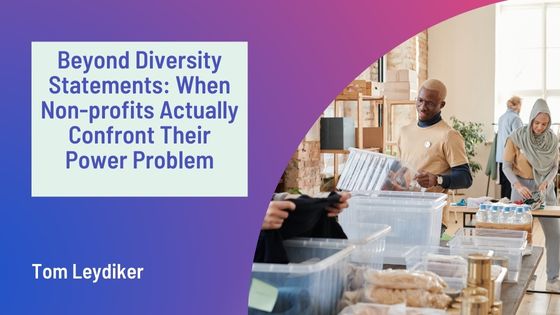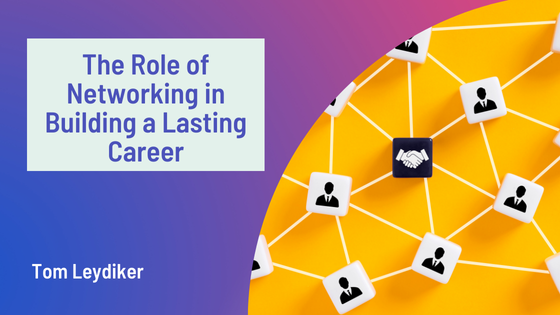The non-profit sector has a power problem it’s been reluctant to confront. Behind the carefully crafted diversity statements, equity commitments, and inclusion pledges lies an uncomfortable reality: many organizations reproduce the very power imbalances they claim to address through their missions.
This dissonance is particularly striking in organizations serving marginalized communities while maintaining governance and leadership structures dominated by those with traditional privilege. Despite decades of diversity initiatives, the demographic gap between non-profit leadership and the communities they serve remains stubbornly persistent. According to the Nonprofit Leadership Alliance, 87% of executive directors and 78% of board members at social service organizations are white, even at organizations primarily serving communities of color.
Beyond racial representation, deeper power dynamics often go unexamined. Decision-making authority, resource allocation, strategy development, and organizational voice frequently remain concentrated among those furthest removed from lived experience with the issues being addressed. This fundamental disconnect undermines both mission effectiveness and organizational legitimacy.
“We spent three years developing a comprehensive youth violence prevention program,” explained James, a program director at an urban youth organization. “We had experts, extensive research, and significant funding. The program failed dramatically because we never meaningfully involved the young people we aimed to serve in program design. We were solving what we thought was their problem, not what they actually needed.”
This pattern repeats across the sector—well-intentioned organizations developing solutions for rather than with communities, then wondering why their impact falls short of expectations. The most progressive diversity efforts often focus on representation without addressing underlying power structures, creating the appearance of inclusion without its substance.
Some organizations, however, are moving beyond symbolic commitments to implement transformative approaches to power sharing. Their experiences offer valuable insights for the broader sector:
Community Justice Initiative completely restructured their board to require that two-thirds of members have direct lived experience with the criminal justice system. This governance shift fundamentally altered organizational priorities and resource allocation, leading to programs with dramatically higher engagement and effectiveness rates. Housing Solutions implemented community decision panels with direct authority over major programmatic and funding decisions, transferring power from professional staff to community members. Their participant outcomes improved by 47% within two years of this structural change.
The Neighborhood Health Collaborative developed a “power mapping” process that explicitly identifies how different stakeholders influence key decisions, then systematically redistributed decision-making authority to increase community control. This process revealed numerous invisible barriers to authentic participation that standard inclusion efforts had missed entirely.
These examples illustrate that meaningful power sharing requires structural change, not just improved representation or inclusive language. Organizations serious about addressing their power problem must examine:
- Who ultimately controls resource allocation decisions
- Whose knowledge and expertise is valued in strategy development
- How success is defined and who participates in evaluation design
- Which voices dominate organizational communication
- How community members participate in governance beyond token representation
- Whether organizational policies and practices create barriers to authentic participation
The resistance to meaningful power redistribution often stems from unstated fears: Will quality suffer if professional expertise is decentered? Will funders support approaches that challenge traditional power structures? Will the organization lose control of its carefully crafted narrative? These concerns, while understandable, reflect the very power dynamics that need examination.
Research increasingly demonstrates that organizations implementing authentic power sharing actually experience improved outcomes, greater innovation, and stronger community relationships. The Community Impact Study found that organizations with significant community leadership showed 37% higher program effectiveness compared to demographically similar organizations maintaining traditional power structures.
Moving beyond diversity statements requires concrete action:
- Conduct an honest power audit examining how decisions are actually made
- Create transparent accountability mechanisms for power redistribution goals
- Implement structural changes to governance that share actual authority
- Develop leadership pathways for community members that address practical barriers
- Allocate resources to support authentic participation
- Examine how organizational culture perpetuates traditional power dynamics
- Build feedback mechanisms that prioritize voices traditionally marginalized
Perhaps most importantly, organizations must recognize that addressing power imbalances isn’t a separate initiative from their mission work—it’s an essential foundation for mission effectiveness. Programs designed without authentic community leadership are inherently limited in their potential impact, regardless of how well-intentioned or well-funded they may be.
The most forward-thinking organizations have realized that confronting their power problem isn’t just the right thing to do ethically—it’s the smart thing to do strategically. By authentically sharing power with the communities they serve, they develop more responsive programs, stronger community relationships, and ultimately, greater mission impact.
The question for non-profit leaders is straightforward but challenging: Are you willing to surrender some of your power to better achieve your mission? Your answer reveals whether your commitment to equity exists merely in statements or genuinely in structure.







